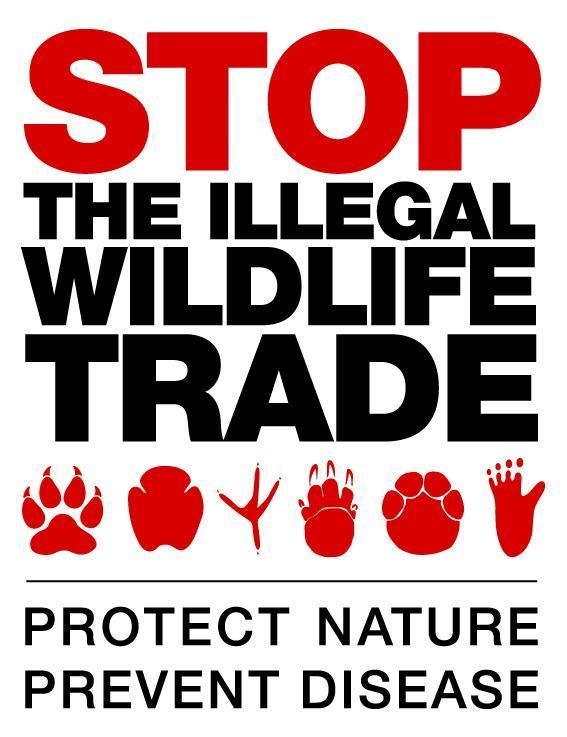We commended China for closing wet markets. But it’ll take bolder steps to end all captive wildlife breeding
We are protecting wildlife at risk from poachers due to the conservation funding crisis caused by Covid-19. Help is desperately needed to support wildlife rangers, local communities and law enforcement personnel to prevent wildlife crime. Donate to help Stop the Illegal Wildlife Trade here
Your support helps us to tell the story
From reproductive rights to climate change to Big Tech, The Independent is on the ground when the story is developing. Whether it's investigating the financials of Elon Musk's pro-Trump PAC or producing our latest documentary, 'The A Word', which shines a light on the American women fighting for reproductive rights, we know how important it is to parse out the facts from the messaging.
At such a critical moment in US history, we need reporters on the ground. Your donation allows us to keep sending journalists to speak to both sides of the story.
The Independent is trusted by Americans across the entire political spectrum. And unlike many other quality news outlets, we choose not to lock Americans out of our reporting and analysis with paywalls. We believe quality journalism should be available to everyone, paid for by those who can afford it.
Your support makes all the difference.The Covid-19 pandemic still ravages the world, with nearly 18 million people infected and more than 686,000 dead. Speculation on its origin is no less viral, but we need science, not conspiracy theories to combat the pandemic.
Emerging infectious diseases including Sars and Ebola have long been linked to wildlife trade and consumption. However, it is not wildlife but human greed and exploitation that is to blame for pathogens crossing the species barrier to human hosts.
China stands out in humanity’s assault on wildlife. Economic liberalisation in the last 40 years has meant growing prosperity in China, unleashing in some unscrupulous entrepreneurs a thirst for wealth from which a gigantic business empire of wildlife exploitation has emerged, disingenuously portraying wildlife consumption as glorifying Chinese culture, conservation-friendly, reducing poverty and saving lives. In truth, it is none of these things.
A major component of wildlife trade in China is the vast network of government-sanctioned mega-farms where wild-caught and captive-bred pangolins, bamboo rats and other unfortunate species are kept in crowded, unnatural conditions. There is nothing cultural or traditional about it. It began in the early 1980s as part of the economic modernisation program to end China’s oppressive poverty and has since become a massive industry generating an estimated $91.7bn in revenue in 2019 alone.
It is an intrinsically cruel commercial enterprise, farming animals for fur, meat, traditional Chinese medicine (TCM), pets and for laboratory experiments. This kind of farming never existed in China’s ancient past, and in fact, China has very little consumer demand for wild animal meat, which has never been part of mainstream Chinese culinary culture.
Traders deliberately create demand with promises of good health, longevity, fertility, and disease recovery. Some consume it to show off their status and wealth. But while most people in China don’t eat wild animal meat, the public health risk to the entire nation, and indeed the world is glaring.
This captive breeding industry also contributes nothing to conservation, while Chinese scientists confirm precipitous declines in the wild of many of the species farmed. China’s bear farms cage some 20,000 Asiatic black bears for bile extraction, while wild bear populations have declined. China has perhaps the world’s largest number of captive tigers, farmed for tiger parts. Meanwhile, the South China tiger has long been extinct, and there are no more than 30 Siberian tigers inside Northeast China. Captive breeding of pangolins is more about traders profiting from this near-extirpated species in China than saving it from extinction.
The massive use of animal parts in TCM is a relatively new phenomenon. In the past, it was dominated by herbal and mineral ingredients and ancient TCM practitioners warned against killing wild animals.

Large-scale consumption of wild animals for TCM only emerged because of modern commercial hunting and captive breeding and the promotion of unproven “life-saving” properties by those with a vested business interest such as animal traders, breeders, TCM drug makers, and practitioners.
By exploiting apologetic attitudes towards traditional culture, these business interests accuse TCM critics of being “anti-China” or “unpatriotic”.
The argument that the wildlife trade contributes to poverty reduction is false too. China’s wildlife farming represents only a tiny fraction of the country’s enormous GDP, with farming profits largely in the bank accounts of a small number of farm or business owners. The majority of the 14 million wildlife farm workers are either part-time or seasonal hires who don’t rely on farming for most of their income.
So, the pandemic has less to do with Chinese culture than with imprisoning billions of wild animals in crowded conditions. While we commend China for promising to phase out most wildlife farming for human consumption and closing wet markets, it will take bolder steps to end all captive wildlife breeding, including massive fur farms breeding millions of animals annually. Captive breeding for any purpose and in any country is a public health risk for all.
Peter J Li is a China policy specialist at Humane Society International and associate professor of East Asian politics at University of Houston-Downtown

Join our commenting forum
Join thought-provoking conversations, follow other Independent readers and see their replies
Comments